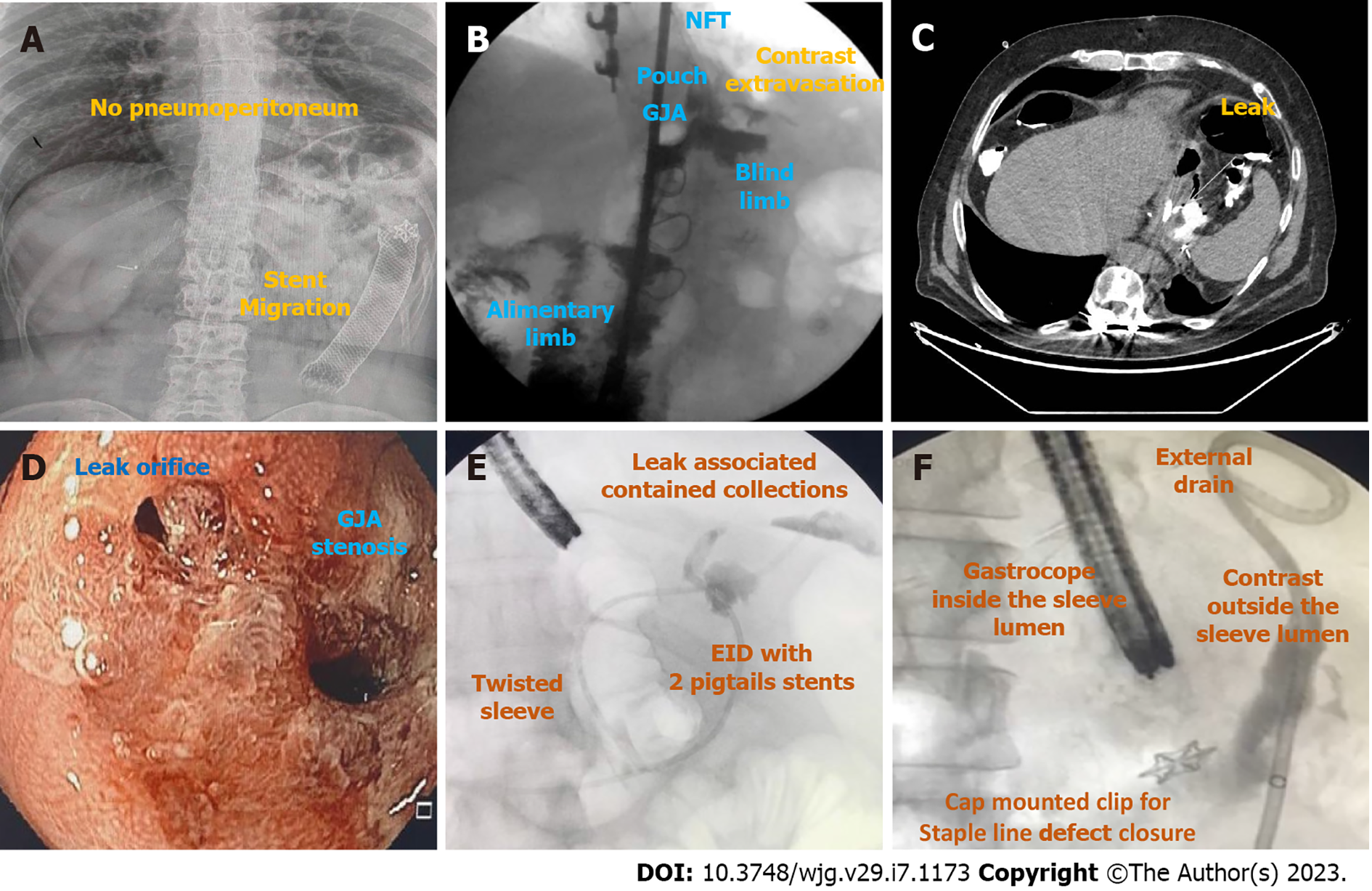Copyright
©The Author(s) 2023.
World J Gastroenterol. Feb 21, 2023; 29(7): 1173-1193
Published online Feb 21, 2023. doi: 10.3748/wjg.v29.i7.1173
Published online Feb 21, 2023. doi: 10.3748/wjg.v29.i7.1173
Figure 3 Imaging exams for diagnosis of leaks and fistulas after bariatric surgery.
A: Abdominal radiograph showing an esophageal fully covered metal stent fixed with a cap mounted clip at its proximal edge used for the treatment of a gastrojejunal anastomosis (GJA) leak after Roux-en-Y gastric bypass (RYGB) migrated to distal jejunum with no signs of pneuperitoneum; B: Upper gastrointestinal (GI) transit for suspicious leak after RYGB showing contrast extravasation; C: Computed tomography scan confirming the GJA leak suspected in the upper GI series (Figure 3B); D: Endoscopic visualization of a GJA stenosis associated with a leak; E: Fluoroscopy image during esophagogastroduodenoscopy (EGD) with injection of water soluble contrast through a catheter showing two leaks in the sleeve staple line with associated collections treated with endoscopic internal drainage with pigtail stents; F: Fluoroscopy image during EGD with injection of water soluble contrast through the external drain showing no extravasation for the intraluminal compartment, confirming the successful defect closure. GJA: Gastrojejunal anastomosis; EID: Endoscopic internal drainage; NFT: Nasoenteral feeding tube.
- Citation: de Oliveira VL, Bestetti AM, Trasolini RP, de Moura EGH, de Moura DTH. Choosing the best endoscopic approach for post-bariatric surgical leaks and fistulas: Basic principles and recommendations. World J Gastroenterol 2023; 29(7): 1173-1193
- URL: https://www.wjgnet.com/1007-9327/full/v29/i7/1173.htm
- DOI: https://dx.doi.org/10.3748/wjg.v29.i7.1173









